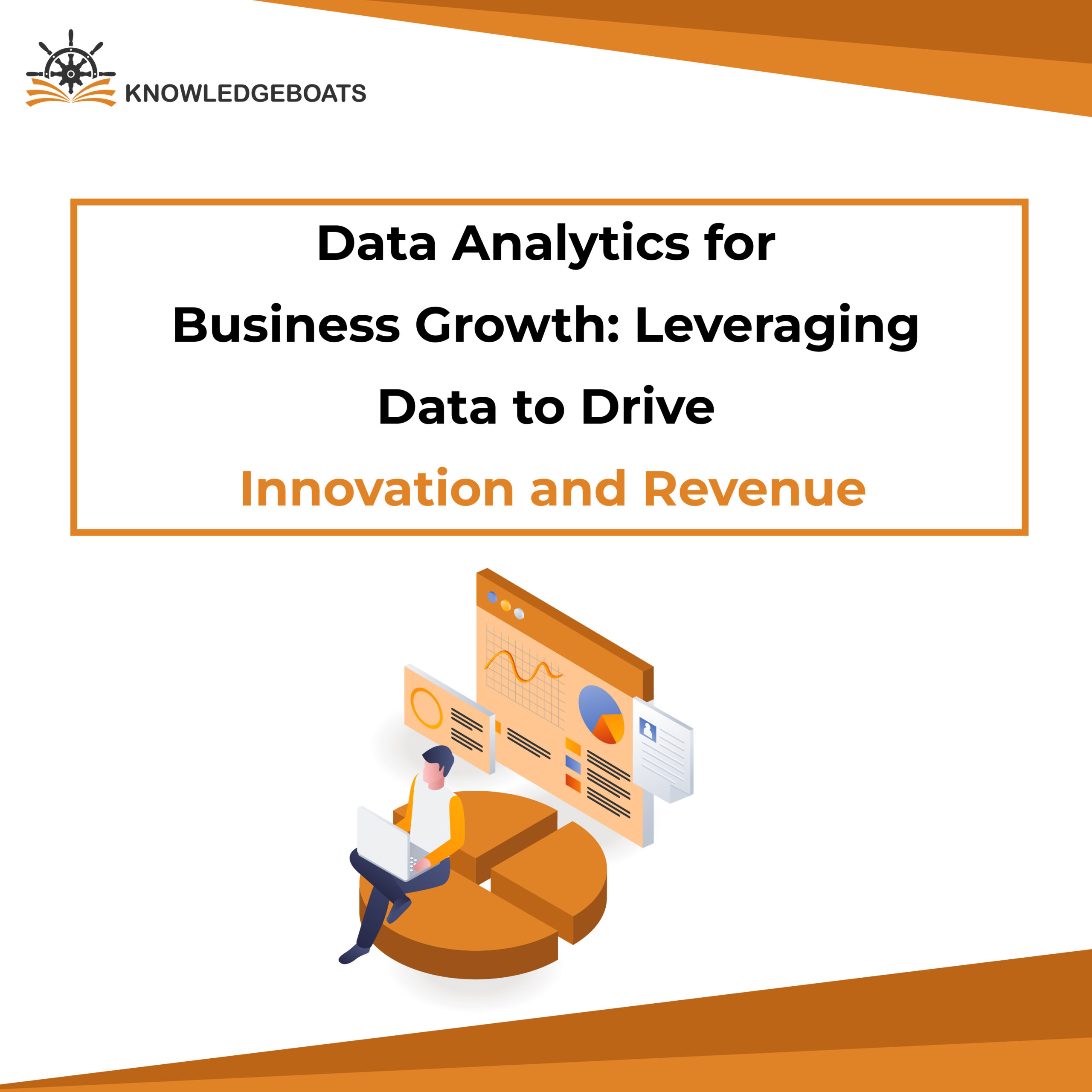
Organizations continuously search for numerous approaches to obtain a competitive edge in modern and fast-paced business scenarios. At that time, a robust tool emerged and became a game changer in data analytics. By leveraging the potential of data, the business can make informed and data-driven decisions that drive business growth, enhance efficiency and improve customer satisfaction. Hence, data analytics plays a significant role in driving business growth and innovation.
By evaluating the massive amount of data, the businesses will obtain valuable insight, which is used to improve operational efficiency and helps in optimizing revenue generation strategies. Therefore, this blog will discover critical ways data analytics is leveraged to drive creativity and revenue.
What is Data Analytics?
Data analytics means examining, interpreting, and drawing insights from raw data to support decision-making, solve problems, and drive business outcomes. It involves using various techniques, tools, and methodologies to analyze data sets, uncover patterns, trends, and correlations, and extract meaningful information from the data.
Data analytics encompasses a range of activities, including data collection, cleaning and preparation, modelling and analysis, and data visualization. It involves working with structured and unstructured data from various sources, such as databases, spreadsheets, text documents, social media, sensors, and more.
Leveraging Data Analytics for Revenue and Innovation
After understanding the significance of data-driven decision-making, it’s time to explore how the organization will leverage analytics to drive business growth.
Demand Forecasting and Inventory Management
By analyzing historical sales data, market trends, and other relevant factors, businesses can develop accurate demand forecasting models. This helps optimize inventory management, ensuring that products are available when customers need them while minimizing excess inventory costs. Demand forecasting and inventory management can improve customer satisfaction, reduce costs, and increase revenue.
Optimizing Pricing Strategies
Data analytics can provide insights into price elasticity, customer behaviour, and competitor pricing. Businesses can optimize pricing strategies by analysing this data driven process to maximize revenue and profit margins. Dynamic pricing models can be implemented, allowing companies to adjust prices in real-time based on factors such as demand, inventory levels, and competitor pricing, leading to increased revenue and profitability.
Enhancing Product Development and Innovation
By analyzing customer feedback, market trends, and product usage data, businesses can gain insights into customer preferences and identify areas for product improvement and innovation. Data management helps priorities product features, guides research and development efforts, and supports data-driven decision-making throughout the product development lifecycle. This can create products that better meet customer needs, attract new customers, and drive revenue growth.
Optimizing Marketing and Advertising Campaigns
Data analytics enables businesses to measure the effectiveness of their marketing and advertising efforts. Companies can identify which campaigns, channels, and messaging resonates best with their target audience by analyzing driven data from various marketing channels. This allows for data-driven campaign optimization, improved customer targeting, and increased marketing ROI, driving revenue growth.
Customer Segmentation and Personalization
Data analytics allows businesses to segment their customer base and understand customer preferences, behaviors, and needs. By analyzing customer data, companies can personalize their marketing campaigns, product offerings, and customer experiences to meet specific customer segments’ requirements, resulting in increased customer satisfaction, loyalty, and revenue growth.
Identifying New Market Opportunities
Data analytics can uncover new market opportunities by analyzing market trends, customer preferences, and competitor activities. By identifying gaps in the market or untapped customer needs, businesses can develop innovative products or services to address those opportunities. This can give organizations a competitive edge, expand their customer base, and drive revenue growth.
Improving Operational Efficiency
Data analytics can identify inefficiencies in business processes and operations. Businesses can uncover bottlenecks, streamline workflows, and optimize resource allocation by analyzing operational data. Improved operational efficiency leads to cost savings, faster delivery times, and enhanced customer satisfaction, ultimately driving revenue growth.
Risk Management and Fraud Detection
Data analytics can be vital in identifying and mitigating risks and detecting fraudulent activities. By analyzing patterns and anomalies in data, businesses can proactively identify potential risks, implement preventive measures, and see fraudulent transactions, thereby protecting their assets and reputation.
Conclusion
Organizations should invest in data infrastructure to effectively leverage data analytics for business growth, employ skilled data analysts or scientists, and ensure data quality and security. Additionally, a data-driven culture that promotes data-driven decision-making and encourages analytics across departments is essential for success.
Thus leveraging data analytics effectively allows businesses to make data-driven decisions, identify new opportunities, enhance customer experiences, optimize operations, and drive innovation. By harnessing the power of data, organizations can unlock valuable insights that fuel business growth, leading to increased revenue, market share, and competitive advantage.



